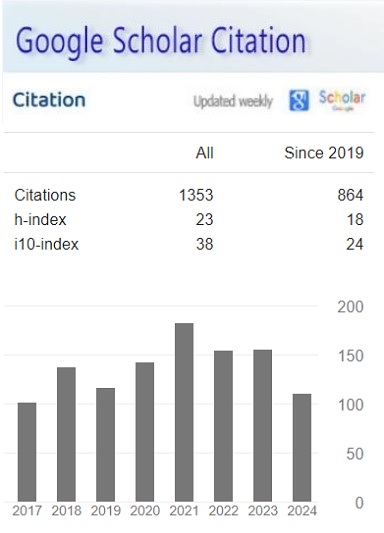How Multiplayer Mobile Games have Grown and Changed Over Time?
Keywords:
Abstract
Millions of people worldwide participate in social gaming through multiplayer mobile games, which have become a cultural phenomenon. This tendency has been spurred forward by introducing high-speed internet, competent cell phones, and broad accessibility. Players can now interact and compete with others, both friends and strangers, from all over the world, erasing the distinctions between locations. These games started as straightforward card-based turn-based games but have since evolved into immersive, real-time 3D experiences. The potential of augmented and virtual reality has been tapped by game creators, creating unique gameplay. Micro transactions, in-game purchases, and the sale of cosmetics have all contributed to the growth of the industry as a whole, making it a vibrant economy. In addition, the competitive nature of multiplayer mobile games has led to the development of an industry known as esports, which features professional players, tournaments, and enormous viewership. Spectators tune in to watch their preferred players or teams, contributing to esports' expansion as a phenomenon experienced worldwide. In recent years, there has been a tremendous shift in the mobile gaming industry, which the proliferation of multiplayer mobile games has driven chiefly. The progression of these games and how they came to be such a powerful force in the gaming industry is investigated in this study.
References
Bose, R., Sarddar, D. (2015). A New Approach in Mobile Gaming on Cloud-Based Architecture Using Citrix and VMware Technologies. Brazilian Journal of Science and Technology, 2(1), 1-13. https://doi.org/10.1186/s40552-015-0012-1 DOI: https://doi.org/10.1186/s40552-015-0012-1
Chen, Y., Weng, S., Guo, W., Xiong, N. (2016). A Game Theory Algorithm for Intra-Cluster Data Aggregation in a Vehicular Ad Hoc Network. Sensors, 16(2), 245. https://doi.org/10.3390/s16020245 DOI: https://doi.org/10.3390/s16020245
Dekkati, S., & Thaduri, U. R. (2017). Innovative Method for the Prediction of Software Defects Based on Class Imbalance Datasets. Technology & Management Review, 2, 1–5. https://upright.pub/index.php/tmr/article/view/78
Dekkati, S., Thaduri, U. R., & Lal, K. (2016). Business Value of Digitization: Curse or Blessing?. Global Disclosure of Economics and Business, 5(2), 133-138. https://doi.org/10.18034/gdeb.v5i2.702
Dekkati, S., Thaduri, U. R., & Lal, K. (2016). Business Value of Digitization: Curse or Blessing?. Global Disclosure of Economics and Business, 5(2), 133-138. https://doi.org/10.18034/gdeb.v5i2.702 DOI: https://doi.org/10.18034/gdeb.v5i2.702
Deming, C., Dekkati, S., & Desamsetti, H. (2018). Exploratory Data Analysis and Visualization for Business Analytics. Asian Journal of Applied Science and Engineering, 7(1), 93–100. https://doi.org/10.18034/ajase.v7i1.53 DOI: https://doi.org/10.18034/ajase.v7i1.53
Duh, E. S., Koceska, N., Koceski, S. (2017). Game-Based Learning: Educational Game Azbuka to Help Young Children Learn Writing Cyrillic Letters. Multimedia Tools and Applications, 76(12), 14091-14105. https://doi.org/10.1007/s11042-016-3829-9 DOI: https://doi.org/10.1007/s11042-016-3829-9
Kasapakis, V., Gavalas, D. (2017). Occlusion Handling in Outdoors Augmented Reality Games. Multimedia Tools and Applications, 76(7), 9829-9854. https://doi.org/10.1007/s11042-016-3581-1 DOI: https://doi.org/10.1007/s11042-016-3581-1
Kim, S. (2015). Nested Game-Based Computation Offloading Scheme for Mobile Cloud IoT Systems. EURASIP Journal on Wireless Communications and Networking, 2015, 1-11. https://doi.org/10.1186/s13638-015-0456-5 DOI: https://doi.org/10.1186/s13638-015-0456-5
Krawczyk, H., Nykiel, M. (2017). Mobile Devices and Computing Cloud Resources Allocation for Interactive Applications. Archives of Control Sciences, 27(2), 293-307. https://doi.org/10.1515/acsc-2017-0019 DOI: https://doi.org/10.1515/acsc-2017-0019
Lai, A. S. Y., Leung, S. Y. (2013). Mobile Bluetooth-Based Game Development Using Arduino on Android Platform. Applied Mechanics and Materials, 427-429, 2192. https://doi.org/10.4028/www.scientific.net/AMM.427-429.2192 DOI: https://doi.org/10.4028/www.scientific.net/AMM.427-429.2192
Lal, K. (2015). How Does Cloud Infrastructure Work?. Asia Pacific Journal of Energy and Environment, 2(2), 61-64. https://doi.org/10.18034/apjee.v2i2.697 DOI: https://doi.org/10.18034/apjee.v2i2.697
Lal, K. (2016). Impact of Multi-Cloud Infrastructure on Business Organizations to Use Cloud Platforms to Fulfill Their Cloud Needs. American Journal of Trade and Policy, 3(3), 121–126. https://doi.org/10.18034/ajtp.v3i3.663 DOI: https://doi.org/10.18034/ajtp.v3i3.663
Lal, K., & Ballamudi, V. K. R. (2017). Unlock Data’s Full Potential with Segment: A Cloud Data Integration Approach. Technology & Management Review, 2(1), 6–12. https://upright.pub/index.php/tmr/article/view/80
Lal, K., Ballamudi, V. K. R., & Thaduri, U. R. (2018). Exploiting the Potential of Artificial Intelligence in Decision Support Systems. ABC Journal of Advanced Research, 7(2), 131-138. https://doi.org/10.18034/abcjar.v7i2.695 DOI: https://doi.org/10.18034/abcjar.v7i2.695
Punt, M., Bjelica, M. Z., Zdravkovic, V., Teslic, N. (2015). An Integrated Environment and Development Framework for Social Gaming Using Mobile Devices, Digital TV and Internet. Multimedia Tools and Applications, 74(18), 8137-8169. https://doi.org/10.1007/s11042-014-2045-8 DOI: https://doi.org/10.1007/s11042-014-2045-8
Sakr, M., Mahgoub, H., Keshk, A. (2014). Human Computation: Object Recognition for Mobile Games Based on Single Player. International Journal of Modern Education and Computer Science, 6(7), 9-15. https://doi.org/10.5815/ijmecs.2014.07.02 DOI: https://doi.org/10.5815/ijmecs.2014.07.02
Thaduri, U. R. (2017). Business Security Threat Overview Using IT and Business Intelligence. Global Disclosure of Economics and Business, 6(2), 123-132. https://doi.org/10.18034/gdeb.v6i2.703 DOI: https://doi.org/10.18034/gdeb.v6i2.703
Thaduri, U. R. (2018). Business Insights of Artificial Intelligence and the Future of Humans. American Journal of Trade and Policy, 5(3), 143–150. https://doi.org/10.18034/ajtp.v5i3.669 DOI: https://doi.org/10.18034/ajtp.v5i3.669
Thaduri, U. R., Ballamudi, V. K. R., Dekkati, S., & Mandapuram, M. (2016). Making the Cloud Adoption Decisions: Gaining Advantages from Taking an Integrated Approach. International Journal of Reciprocal Symmetry and Theoretical Physics, 3, 11–16. https://upright.pub/index.php/ijrstp/article/view/77
Zhu, M., Martinez, S. (2013). Distributed Coverage Games for Energy-Aware Mobile Sensor Networks. SIAM Journal on Control and Optimization, 51(1), 1-27. https://doi.org/10.1137/100784163 DOI: https://doi.org/10.1137/100784163
Downloads
Published
How to Cite
Issue
Section
License
Copyright (c) 2019 Asian Journal of Applied Science and Engineering

This work is licensed under a Creative Commons Attribution-NonCommercial 4.0 International License.








